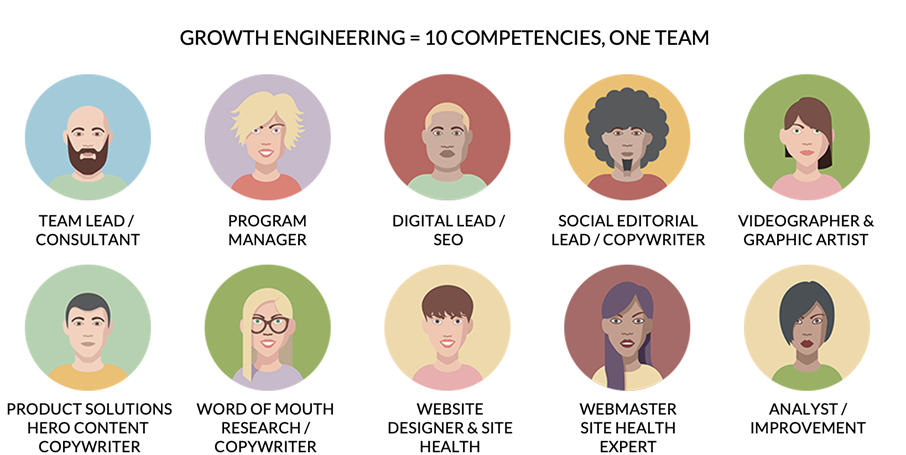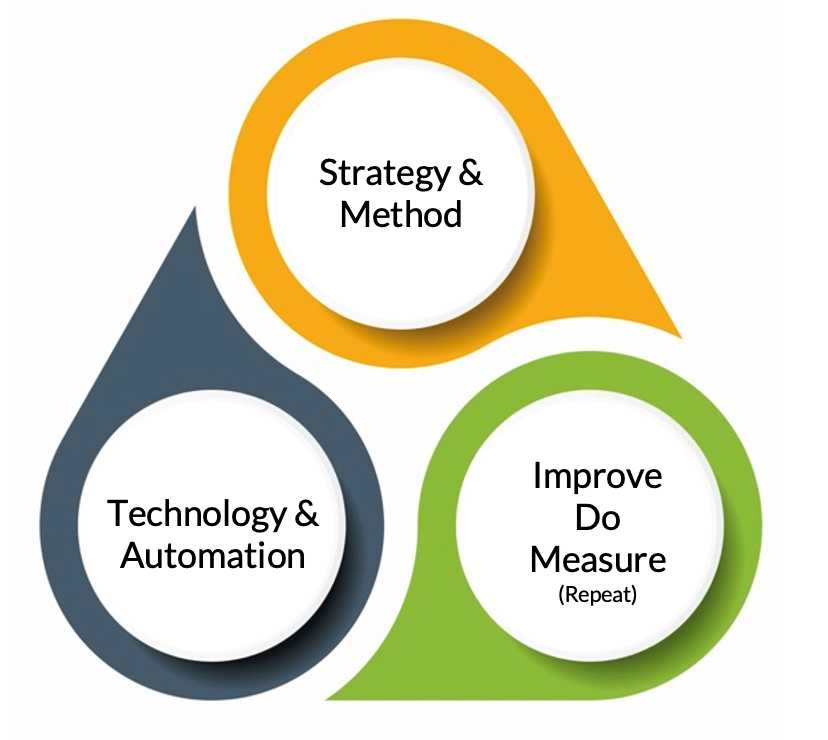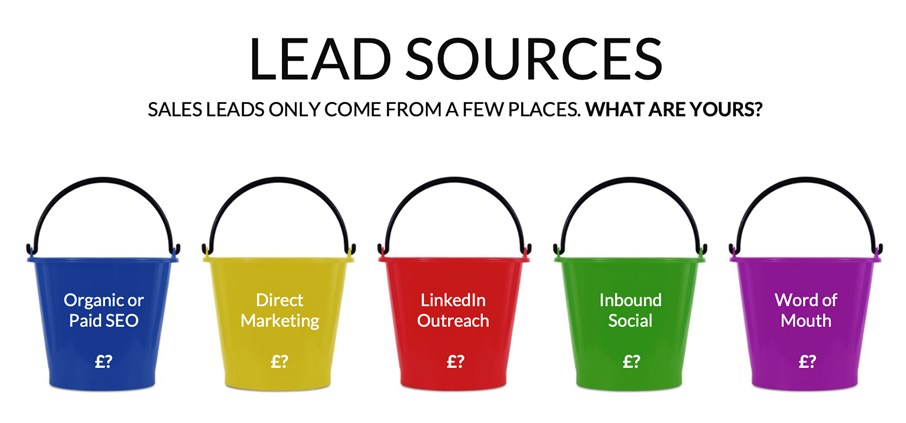10 min read

Ian C. Tomlin

You know what marketing is. It’s the team you blame when your fictional sales lead target doesn’t get reached. It’s that agency promising to do everything for your business growth that delivered nothing. So what is Growth Engineering, and how is it different?
I’m not anti-marketing. I’m just pro growth.
Look at the facts. Business leaders habitually hand over a chunk of cash to an internal marketing team or a marketing agency expecting them to work miracles in hitting an imaginary lead target. When they fail (which they almost are guaranteed to do), they get blamed for not delivering on their promises.
Does the journey I outline below resonate at all?
1. You pay cash to a marketing team to hit your sales lead target.
2. They fail
3. In their defense, marketing teams come up with all sorts of interesting new things to measure, to demonstrate they are producing progress, if not leads.
4. After a while (when you know the result is NEVER going to work), you change teams.
5. Then, the cycle begins again.
As a business leader, when you place your hope in ‘marketing’ you emotionally pass on the responsibility of making your business successful. In my humble opinion, that’s not the wisest thing to do.
- Marketing is too big for the marketing department—if it fails, your business fails
- It’s way too easy to ‘blame marketing’ when customer engagement isn’t where it needs to be
- You force marketing to try to justify their existence with ROIs when many of these measures have no impact on business outcomes
- You only have one set of customers, so why do you want multiple departments working in isolation to win them, keep them happy and grow them?
What is growth engineering?
Growth Engineering is about designing, implementing, and resourcing a production line for brand amplification and profit growth across the four phases of your customer lifecycle.
A growth engineering team employs TEN different skillsets to make this happen and combines consultative know-how as much as marketing resources and technology.

Read About the Ten Competencies of Growth Engineering
A growth engineering discipline brings oversight right across your customer journey to ensure the maximum gains are achieved. It combines STRATEGY, PEOPLE, PROCESS, and TECHNOLOGY to install and operate positive habits in your growth agenda.
Growth engineering is a blend of management consulting, marketing, and technology innovation.

Defining the lead buckets
When it comes to new customer acquisition, one of the chief ambitions of businesses is to build a consistent pipeline of sales leads. Where we start with this (adopting our lazy marketing ‘minimum gain, maximum gain’ ethos) is to work out where sales leads can come from. Then, we examine how to quickly improve it.

Of course, just defining the buckets won’t deliver any leads. You’re going to have to formalize joined-up campaigns to bring site visitors to your door. And, like all disciplines, there are some tricks to the trade.
Read about the 3 Things That Even the Best Startups Get Wrong in Their Digital Marketing
Your growth agenda has four elements, not one.
The four phases of your customer lifecycle are:
SEDUCE
ENGAGE
DELIGHT
EXPAND
Businesses often spend over 80% of their marketing budget on acquiring new customers and comparatively little on satisfying and growing existing accounts.
Read our Guide to SONAR2 to learn about the 4 customer lifecycle phases and how to maximize them in your business
Fortunately (perhaps), the task of winning customers has become so hard over the past decade that companies are thinking more about how to profit from their existing accounts. This is thanks to digital marketing equipping prospective buyers to serve themselves with knowledge about available products online.
This makes sense because everyone knows it’s easier to sell to an existing customer who knows what you do, rather than reaching out to people who have never heard of your business.
Building profitable conversations
The primary objective of developing positive habits in your growth agenda is to create hundreds, if not thousands, of profitable conversations with customers new and old. The way to do that is to map out the journeys they are likely to take, and what you need to do to feed their curiosity with valuable information, learning, and offers.
Read about conversational paths and how to build them
I should say that for many tech-centric businesses, one of the big challenges is how to introduce new ideas and new ways of doing things into your conversational paths.
Your prospective customers won’t be searching for something they know nothing about, or can’t comprehend, so you need to find ways of reaching your audience that build up from what they already know. Bear in mind that educating customers can cost a lot of money. This all adds to your cost of sale.
The people, process, technology, data aspects of growth engineering
Like any discipline, doing it well is a blend of people, process, technology, and data.
In the case of growth engineering, when it comes to people, I’ve covered these ten competency areas earlier in this article. Suffice it to say that
Growth engineering is a blend of management consulting, marketing, and technology innovation.
What you don’t get from a growth engineering capability and how the figures add up
Investing in Growth Engineering does not represent your entire budget overhead for customer engagement; there will be other pockets of spending to think about. Typically, any outreach agenda—whether it’s paid SEO, events, outreach programs, CRM systems, etc.—will not be included in your growth engineering investment. This means you should be looking at an uplift of at least 40% on your GE investment.
These are the basic principles of budgeting for growth:
A typical business should expect to invest somewhere between 8 and 12% of its total revenues on initiatives to grow, retain and expand customer incomes. However, if you’re a startup, that figure is likely to increase to 20-25%.
Of this, most companies will spend approximately a quarter of this cash normally on marketing tech.
If you work with a GE company like Newton Day and these platforms are largely outsourced, which means this cost drops to around 5%.
Another quarter will normally go into paying your marketing team, not forgetting that, in most cases, people that organize marketing don’t deliver it, so another 20% often goes to agencies.
With a GE company like Newton Day, those costs are shared across a portfolio of clients, which means you effectively pay for two low-cost heads and get 10, accepting that you don’t need all of these skills all of the time. We call this our 1+1(?) resourcing model. It means your business enjoys a full lineup of accessible experts at 1/10th of the costs associated with building this team in-house.
So, what about marketing?
Throughout this article, I haven’t mentioned marketing as such. That’s because I can tell you it’s not helpful. It shrouds everything in a veil of ‘art or witchcraft’ that doesn’t help business leaders to lead.
You don’t need a marketer. What you need is to manage a series of actions that result in:
- Creating customers
- Satisfying customers and equipping them to buy more and recommend you to others
- Finding out what new things customers want to buy
- Managing the four phases of customer lifecycle
- Failing fast, learning, and improving
- Installing positive growth habits across your enterprise
Ready to get your growth on-track?
Click the big red button
to get started
Further Reading
Bossing the AI Bots
Regenerative AI is empowering experienced knowledge workers and managers to serve themselves to get jobs done faster, without human teams.
Short-Form Video
Read this article to learn how short-form video is transforming the marketing industry
B2B Content Diversification
Podcasts, YouTube, & Short-Form Video…Which Reigns Supreme? Compare and contrast the popularity and usefulness of the next generation of marketing channels and get the facts.


